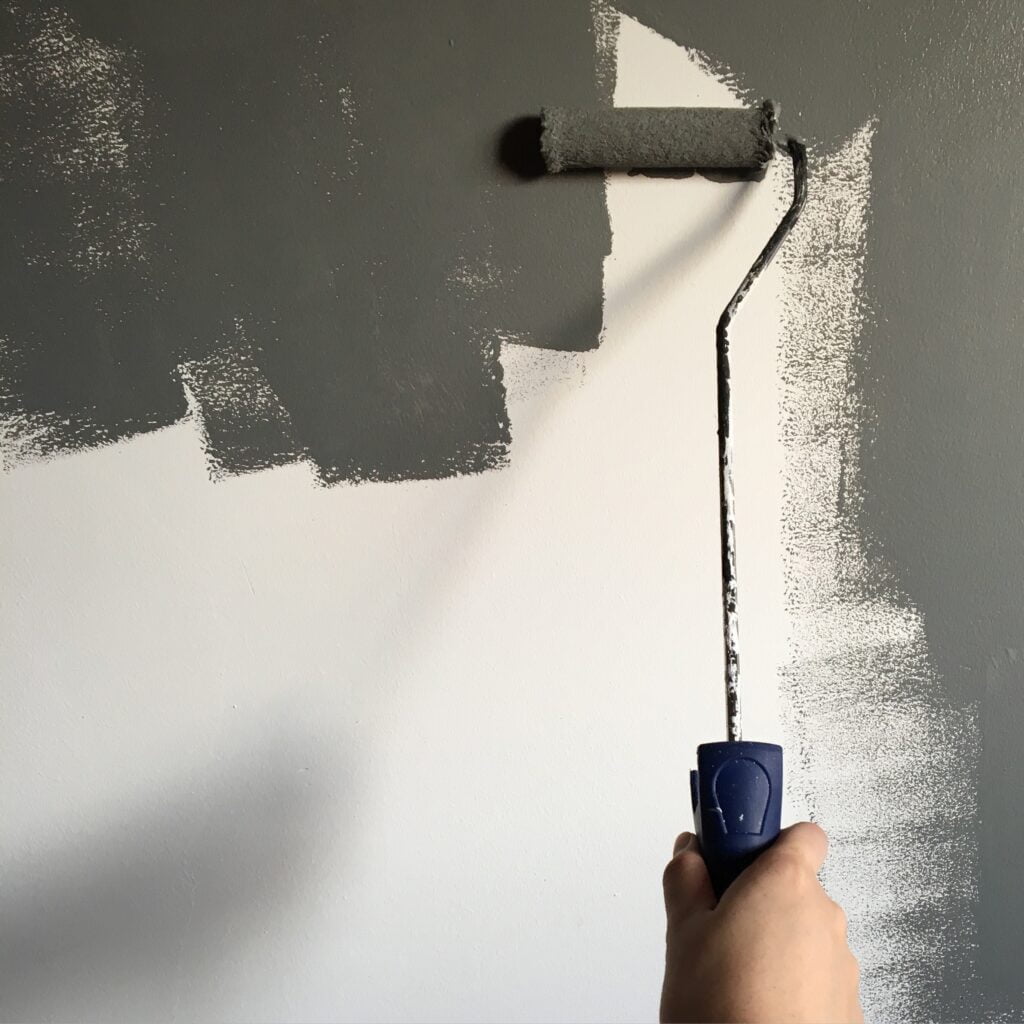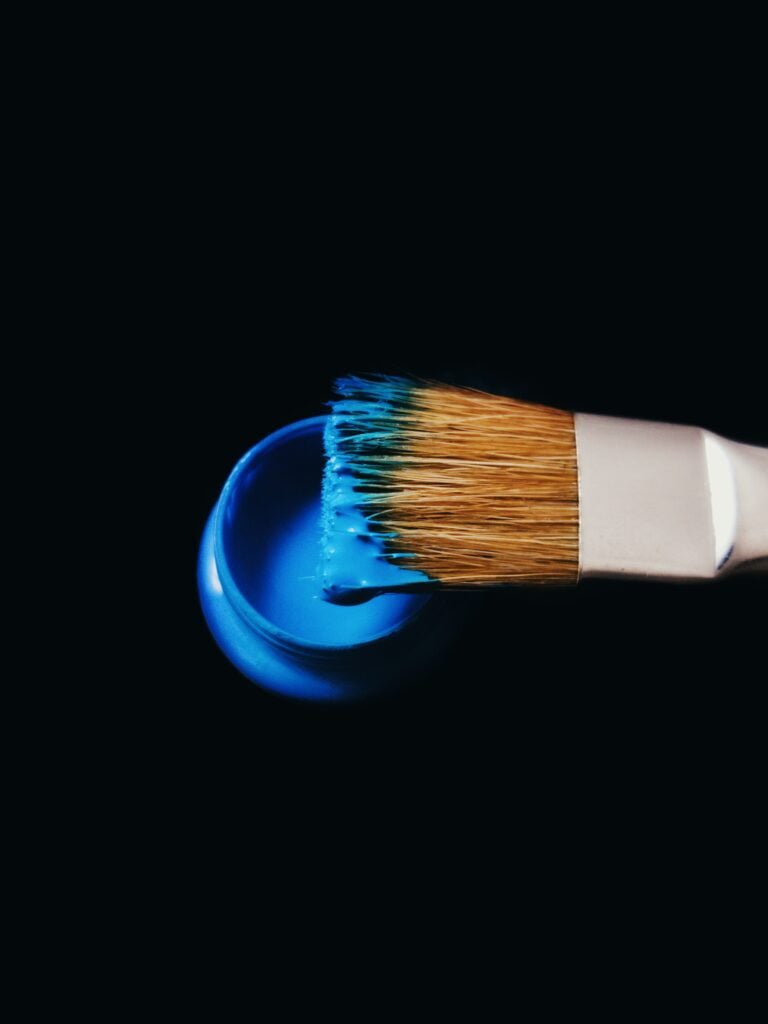Additionally, learn how to halt your painting endeavor without ruining your brushes.
The appropriate painting supplies are expensive to purchase, but a good paintbrush may make all the difference in the outcome of your project. It makes natural that you would want your equipment to survive to paint another day after investing in painting supplies. However, if you don’t thoroughly clean your paint brushes and rollers (or if you let paint dry on them), you might be sending them directly to the garbage or, at the very least, lowering the quality of any upcoming painting efforts.
We spoke with specialists from some of the top paint manufacturers in the business to understand precisely how to clean paint brushes and rollers in order to make sure you not only pick up the proper equipment but also take care of it like a genuine pro.

Step One: Invest In Quality Painting Tools
A general rule of thumb: Investing in high-quality tools can help you look like a paint-savvy pro. High-quality paint brushes and rollers will not only help you achieve a smoother, more polished finish on your walls, but they will also last longer. Rick Watson, the company’s head of product information and technical services, advises always using high-quality paint and tools. That will significantly affect the quality of your paint work, as well as how simple it is to paint and how long your tools last.
As plastic pieces are more prone to break apart with continuous usage, Watson advises picking a brush with a hardwood handle and a metal ferrule (the piece that links the bristles to the handle). It may seem paradoxical, but when it comes to bristles, he says, “you want to look for flagged bristles, which means the ends are split or fuzzy and feel soft to the touch. Watson offers a brand like Purdy, which also has densely-packed bristles manufactured from a blend of nylon and polyester, which work together for exceptional durability and form retention. “This results in a smoother texture and sharper lines when cutting in.”
The secret to using rollers well is to match the nap length to the texture of the wall you’re painting. While more textured surfaces (like brick) require a longer nap of 34 inches, extremely smooth surfaces can tolerate a shorter nap (about 18 to 14 inch). To aid in distributing paint onto the roller evenly, you should also invest in a strong paint tray with ribs on the bottom.
Step Two: Prep Your Tools For Success
To make sure you’re getting the most out of your high-quality tools before painting, there are a few things you can do, according to Mike Mundwiller, end-user product experience manager at Benjamin Moore. He advises wrapping your paint tray with a plastic liner or wrap to make cleanup a breeze and repeatedly running your hands over the bristles of your brush to remove any stray hairs that might get into your paint. One more expert trick? Painter’s tape, but not in the way you might expect. Before using a new roller for the first time, Mundwiller advises wrapping the entire roller in blue painter’s tape and pulling it off. This will “defuzz” your roller before painting, preventing the accumulation of fibers into your paint.
Step Three: Pause Properly
You shouldn’t just leave your paintbrush or roller in a paint pool if you need to take a break. Watson advises homeowners using a roller and paint tray to ruin the entire thing—figuratively speaking, of course. The roller tray, roller handle with roller, and brushes will all be placed inside a regular waste bag, he explains, if he’s using a roller tray. Make sure to seal it shut firmly to prevent airflow.
Both experts advise painters to store old brushes and rollers in plastic bags or tightly wrapped plastic wrap in order to keep all air away from the paint’s surface and prepare for short pauses (think: an hour or two). “Wrap your tools and store them in a refrigerator if you are finishing up for the day and want to pick it back up in the morning,” advises Mundwiller. Just be sure to wait until the tools are at room temperature before using them to paint the next day.
Step Four: Clean Paint Brushes and Rollers Quickly
Although it may not be what you want to hear, it is preferable to clean up as soon as the painting is over. We understand that your only desire right now is an iced coffee and a Netflix marathon, but try to push through to finish the last chore on your list by cleaning your paint rollers and brushes. If you wait until the paint has started to dry before cleaning it up, you run the danger of completely destroying your tools. Paint is much more difficult to remove once it has started to dry. All of your paint tools should be properly cleaned and stored, according to Watson. “I attempt to wash my brushes as soon as I’m through using them.”

How to clean paint brushes:
- To remove paint off your brushes, rinse them with warm water and a small amount of mild dish soap. Gently push the soap into the bristles until the water is clear.
- To remove all of the paint more rapidly, including any dried paint pieces close to the ferrule, grab a paint brush scraper. Run the scraper through the bristles, then rinse under warm water and repeat.
- The Purdy’s Brush and Roller Spinner, which rotates paint brushes and roller coverings above a container to help remove all of the paint and water more rapidly, is recommended by both Watson and Mundwiller. Just make sure the area and your clothing are shielded from paint spray before proceeding.
- After cleaning, let paint rollers and brushes air dry fully before putting them away or using them again. Watson advises keeping the original cover that your brushes came with when you bought them. They’re fantastic at protecting the brush’s bristles and assisting in maintaining the brush’s natural shape.
How to clean paint rollers:
- Scrape any extra paint from the roller into the paint can or over a trash can using a metal multi-tool with a curved edge.
- The paint roller frame’s roller cover should be taken off and cleaned with warm water. You can use a little mild dish soap if necessary, but make sure to rinse everything well before moving on to your next painting endeavor to avoid creating suds. When the water runs clear, the roller is clean.
- Let the roller entirely air dry; ideally, stand it upright to prevent one side from becoming flattened.
- Use soapy water and a robust scrub brush (one that you don’t use for dishes or anything food-related) to remove any dried-on paint from the paint roller frame. Rinse thoroughly, then let the frame air-dry.
To see other material construction, please see here.
To know other construction guides, tips, and methodology for beginners, veterans, and contractors, please see here.

